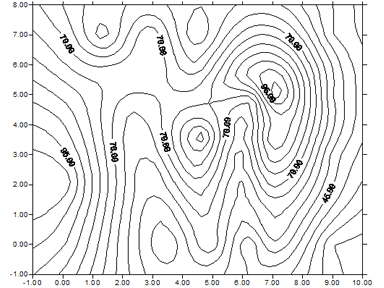Flatness
Testing a floor for compliance with a ruler or optical scope can be an extremely slow process and always subject to interpretation and human error when recording data.
Our profilographs are designed to reliably record thousands of points. The variety of our profilographs allows us to adapt and monitor all standards currently in force on the international market.

DinMeter (DIN18202)
Allows a plan to be inspected against the limits of DIN 18202 specification. It produces a continuous differential profile of the ground at the center point from a mean line generated by two points 1 meter apart. The data is analyzed, and the percentage error on the surveyed path is calculated and graphs are produced for a scale of 1, 2 and 4 meters. Printed graphs and details of the results are provided.
Prop II Meter

It allows to check the conformity of the property F in the specifications of the standard TR34 (fourth edition) for free movements. The device is capable of measuring at a continuous rate of change of slope over a distance of 600 mm.
Transbar

The Transbar Meter is a valuable tool for those wishing to save on the cost of correcting cross-bar errors in narrow aisles (VNA).
This device mainly allows instant on-site obtaining of the transverse error value.
Quick and easy to use, the Transbar Meter allows the technician smoothing fresh concrete or grinding hardened concrete to check their own work quickly, easily and accurately.
All-in-One Profilograph

The "All In One" Profileograph is a self-propelled wheeled instrument that moves across the ground taking continuous measurements both transversely and longitudinally. This device is suitable for checking the flatness of narrow aisles with defined movements (DM1, 2, 3). The measurements are generated by inclination sensors, thus analyzing the longitudinal and transverse properties of the specifications of TR34, EN15620, DIN 15185 and ACI-Fmin standards.
 |  |  |
|---|---|---|
 |  |  |
 |  |  |
Flatness analysis with a 3D scanner
Until now, measuring devices allowed for a statistical approach to defects based on a surface sample. Today, thanks to the scanner, we can digitize and analyze the entire surface of your paving.
3D scanning or digitization is a first step that allows us to obtain a point cloud of the project, which will then be reworked and analyzed to obtain the desired profile. Depending on the required flatness specifications, the results will be presented in the form of a defect map, contour lines, and detailed measurement tables.

 |  |  |
|---|---|---|
 |  |  |
 |  |  |
 |  |  |
